Equid herpesvirus type 1 (EHV‐1) is widespread in equine populations. Whilst the majority of horses have been exposed to this virus by 1 year of age, and typically experience only mild respiratory disease, viral infection of blood cells may lead to more serious complications in other organs including late‐term abortion, neonatal foal death and neurological disease (equine herpes myeloencephalopathy, EHM). In addition, infected horses develop a latent (dormant) infection which has the potential to be reactivated in periods of stress. Significant nasal shedding of EHV-1 occurs during infection with widespread environmental contamination. Control of EHV-1 infection depends on biosecurity such as isolation of new horses and adequate cleaning of the environment. As an enveloped virus, EHV-1 is susceptible to many commonly used disinfectants as well as environmental conditions such as air temperature, desiccation and ultraviolet (UV) light. However, eradication of EHV‐1 from housing environments containing unsealed wood and porous bedding (eg wood shavings, straw) which are often protected from UV light exposure.
Researchers in the USA have recently investigated the persistence of EHV‐1 on different materials and in environmental conditions commonly found in equine facilities1. A standard amount of EHV‐1 was applied to leather, polyester‐cotton fabric, two bedding materials (pinewood shavings and wheat straw) and polystyrene (plastic), and placed under three different environmental conditions (4°C, indoors and outdoors). Virus identification and enumeration was performed at six time points between 0 and 48 hours.
Although there were significant reductions in viral load within the first 3 hours, irrespective of environment‐material evaluated, viable virus was still recovered at 48 hours likely representing a transmission risk. In general, outdoor environment had the greatest impact on reducing viral load, irrespective of material tested, followed by indoor environment and 4°C. On average, wood shavings had the greatest reduction of viral load, followed by leather, straw, fabric and polystyrene.
The presence of virus in nasal secretions in natural infection likely increases persistence in the environment above that determined in this study. Biosecurity is therefore of utmost importance to prevent spread of EHV‐1 from unrecognised environmental reservoirs.
References
1. Saklou, NT, Burgess, BA, Ashton, LV, Morley, PS, Goehring, LS. Environmental persistence of equid herpesvirus type‐1. Equine Vet J. 2020; 00: 1– 7 available HERE


